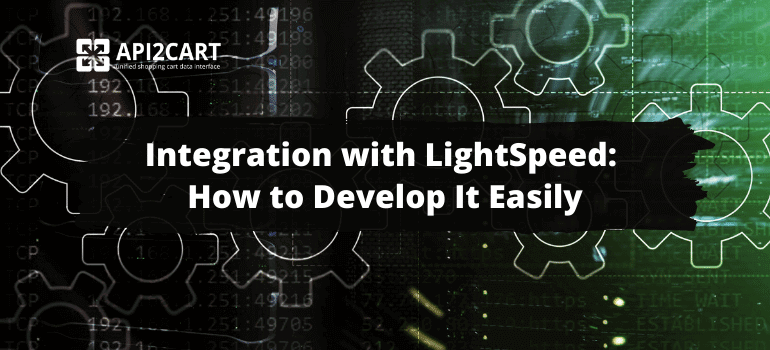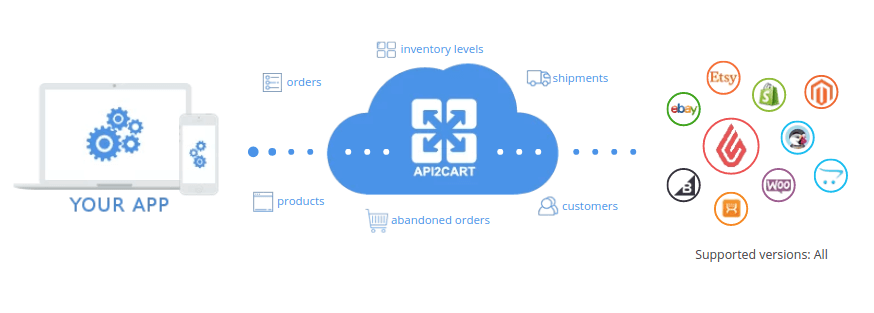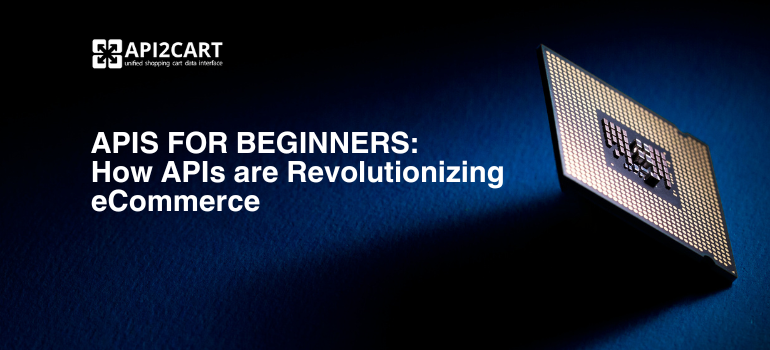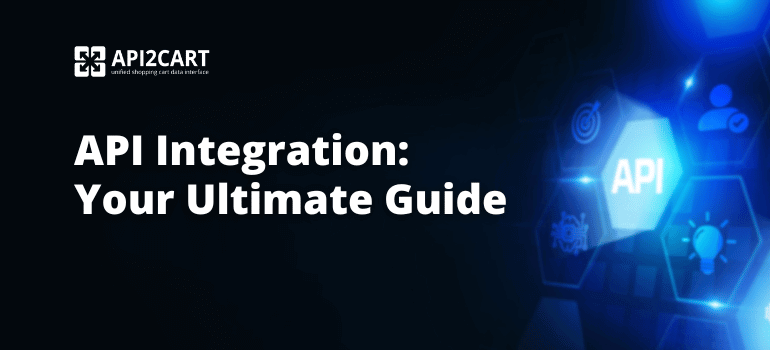
Any type of eCommerce B2B software provider, such as ERP, shipping management, inventory management, multichannel, marketing automation, dropshipping automation, and pricing software, needs to be able to develop reliable LightSpeed integration.
LightSpeed is a top-rated eCommerce platform that is widely used by e-retailers from all over the world. The development of the connection with it allows software providers to access the valuable data from the shops built on it.
Data is the foundation across all areas and verticals, including dropshipping, inventory control, ordering, warehousing, and the list goes on. However, working with data is very hard or difficult to accomplish without proper eCommerce integration.
As a B2B SaaS software vendor, you have to integrate your API with the APIs of eCommerce platforms like LightSpeed. This enables you to achieve a competitive edge and offer superior services to your customers. The integration allows you to handle information about orders, shipments, clients, products, and work with it to create personalized reports and automate e-retailers’ tasks.
Below, we’re going to offer you in-depth advice on how to quickly and easily develop API integration with LightSpeed. However, before going practical, it’s essential to become aware of the main reasons to perform integrations with this and the other shopping platforms.
Why do eCommerce Software Need Shopping Platform Integration?
As a SaaS app provider, you need to gain an edge in your niche and make your solution more accessible to the end-user. Knowing what integration actually means is not enough if you want to scale your business and dive into new markets. In a nutshell, you have to be aware that the more integrations you have with shopping platforms, the higher your impact on the market becomes.
Additionally, with each integration, you’ll gain access to more useful data, so your team will learn new skills in manipulating and working with data.
To top it all, integrating your SaaS software with eCommerce platforms enables you to position yourself as a trustworthy, transparent company that is willing to invest in stable relationships with clients. As a result, you’ll be able to skyrocket your profits and increase your revenues in the long run.
Without a reliable connection with the shopping platforms, your eCommerce software won't be able to get, add, delete, and sync various types of data from the multiple e-stores. It includes the info on orders, customers, tracking data, price details, products, etc.
So, as you can see, the development of shopping platform integrations are inevitable. The next question is what platforms to choose. We propose you pay attention to the LightSpeed platform.
Top Benefits and Difficulties of LightSpeed Integration
LightSpeed is an eCommerce platform used by a great number of online sellers for promoting their products. Despite being pretty new on the market and being as famous as Wix and Shopify, LightSpeed distinguishes itself by offering modern site creation features and simplifying customer management and inventory.
Originally designed as a point of sale for retailers, restaurants, and brick-and-mortar businesses, LightSpeed grew into a sophisticated eCommerce tool that allows users to create various upselling prompts and offers them multi-currency and multi-language support. This platform offers some priceless functions such as a built-in blogging tool, super-fast loading, and metadata optimization.
LightSpeed enables site owners to implement certain product features and streamline navigation so that modern shoppers can quickly & seamlessly find what they are looking for.
According to BuiltWith, LightSpeed powers more than 5,880 e-stores in the Netherlands, 4,000 stores in the USA, 885 in Belgium, and 730 in Canada.
The benefits you can get from LightSpeed integration are multiple and include:
- Boost your profits
- Expand your customer database
- Gain access to new data
- Dive into new markets
LightSpeed provides a RESTful API that supports XML and JSON formats and OAuth2 authentication.
Of course, to cater to thousands of potential customers who are using this platform, you need to be able to integrate your system with LightSpeed API. The drawbacks of in-house development of integration with this platform include:
- A lot of time spent performing the integration
- Huge costs associated with the API integration
- Difficulties with the LightSpeed API and its continuous updating
How to Start with the Integration with LightSpeed?
So how can you start with LightSpeed integration? The easiest, safest, and most affordable way to do it is by using API2Cart.
API2Cart is a unified API that enables you to integrate your eCommerce software with no less than 40 shopping platforms, such as Magento, Hybris, Shopify, PrestaShop, BigCommerce, and of course LightSpeed.

With just one integration, you can connect your API with all of these shopping platforms and save thousands of dollars and several weeks of work. Additionally, you won’t have to worry about further maintenance costs or spending precious energy trying to maintain separate connections because API2Cart’s engineers will tackle this job in your place.
In terms of LightSpeed integration, API2Cart provides a plethora of API methods that effectively retrieve and manage the data from this shopping platform. Let’s explore them below.
- for working with cart: cart.create, cart.list, cart.validate
- for working with the product data: product.list, product.info, product.count
- for working with the orders: order.list, order.count, order.info
You can learn more about API2Cart by contacting one of our product managers. Note that the service comes with flexible pricing, plus you can test it for free over a period of 30 days, risk-free.



